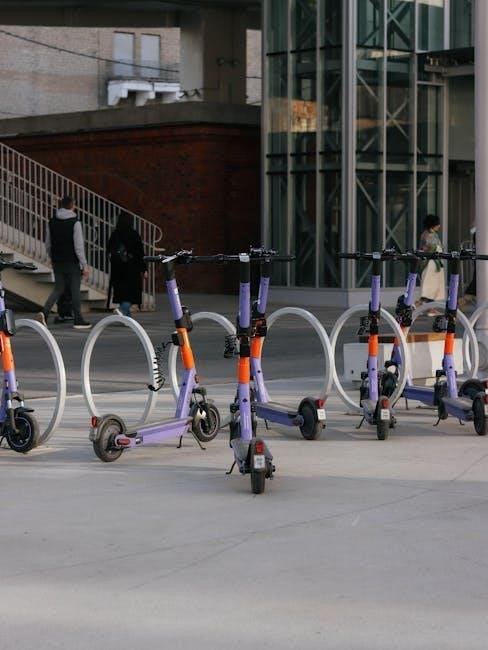The Nostalgia Popcorn Maker combines retro design with modern functionality, offering an easy way to create delicious theater-style popcorn at home. Its all-in-one design includes a built-in bucket, making it a convenient and fun appliance for movie nights. With simple operation and quick results, it’s perfect for both casual users and popcorn enthusiasts. The manual is readily available online, ensuring easy setup and troubleshooting for a seamless popping experience.
Overview of the Nostalgia Brand
Nostalgia Products LLC is a leading brand specializing in retro-style kitchen appliances that evoke a sense of nostalgia while offering modern functionality. Known for their iconic designs, Nostalgia creates products that blend classic aesthetics with innovative features, making them a favorite for both home use and gifting. The brand is particularly popular for its popcorn makers, which are designed to replicate the authentic theater popcorn experience. Nostalgia prioritizes quality, durability, and user-friendly operation, ensuring their appliances are accessible to everyone. Their product line extends beyond popcorn makers, including other retro-inspired items like ice cream makers and cookie jars. The brand’s dedication to nostalgia and performance has made it a trusted name in kitchens worldwide.
Key Features of the Nostalgia Popcorn Maker
The Nostalgia Popcorn Maker is designed with user convenience and efficiency in mind. It features a built-in kettle that quickly heats up to pop kernels evenly, ensuring minimal unpopped kernels. The appliance includes an oil measuring spoon, making it easy to add the perfect amount of oil for flavorful popcorn. Its compact design and retro-style aesthetics make it a charming addition to any kitchen. The popcorn maker also comes with a manual that provides clear instructions for operation, maintenance, and troubleshooting. With its simple switch operation and quick popping time, it’s an ideal choice for home movie nights or casual snacking. The unit’s durability and easy cleaning further enhance its appeal.

Downloading the Nostalgia Popcorn Maker Manual
Visit ManualsLib or the official Nostalgia website to download the manual for free. Search by model number, like RHP310 or RKP530, and follow the steps to access the PDF guide.
Where to Find the Manual Online
The Nostalgia Popcorn Maker manual is easily accessible online. Visit ManualsLib or the official Nostalgia website to download the PDF manual for free. These platforms allow you to search by model number, such as RHP310 or RKP530, ensuring you find the correct guide for your specific popcorn maker. Additionally, the manual for popular models like the Nostalgia Coca-Cola 8-Cup Hot Air Popcorn Maker is readily available. Once on the website, simply enter your model number or product name in the search bar, locate the manual, and follow the prompts to download it. This ensures you have all the necessary instructions for setup, operation, and troubleshooting.
How to Search for Specific Models (e.g., RHP310, RKP530)
To find the manual for your Nostalgia Popcorn Maker, start by identifying the exact model number, such as RHP310 or RKP530, usually located on the product or packaging. Visit ManualsLib or the Nostalgia official website and use the search bar to enter your model number. On ManualsLib, type “Nostalgia RHP310 manual” or “Nostalgia RKP530 manual” to locate the specific guide. You can also search on Google using the same format. If unavailable, check forums or contact Nostalgia customer support for assistance. Always download from trusted sources to ensure safety and accuracy.
Steps to Download the PDF Manual
Once you’ve located the correct model, follow these steps to download the manual. Click on the model number link to open the manual’s page. Look for a “Download” or “View PDF” button and click it. The manual will open in your browser as a PDF; To save it, right-click the document and select “Save As”. Choose a location on your device and ensure the file format is set to PDF. If prompted, create a free account on the website or complete a CAPTCHA to access the download. Once saved, you can easily access the manual offline for future reference. Always verify the source for authenticity before downloading.

Understanding the Nostalgia Popcorn Maker Components
The Nostalgia Popcorn Maker features a durable kettle, a powerful heating element, and a large popping chamber. The stirring system ensures even cooking, while the ventilated lid allows steam to escape. These components are designed for easy cleaning and long-lasting performance. Understanding each part helps you use and maintain the popcorn maker effectively, ensuring delicious results every time.
Parts and Accessories Included
The Nostalgia Popcorn Maker comes with a variety of essential parts and accessories to ensure a seamless popcorn-making experience. These include the main unit, a removable kettle, a motorized stirring rod, and a clear plastic lid for easy monitoring. Additional accessories like a popcorn scoop and a measuring cup for oil are also provided. Some models may include a seasoning shaker and a recipe booklet. All parts are designed for easy assembly and cleaning. The included user manual provides detailed instructions for using and maintaining the popcorn maker effectively. These components ensure you have everything needed to start making delicious popcorn right away.
Design and Build Quality
The Nostalgia Popcorn Maker is crafted with durable materials, ensuring long-lasting performance. Its sturdy base and high-quality components provide stability during operation. The retro-inspired design adds a classic touch to any kitchen countertop. The detachable kettle is made of heavy-duty stainless steel, while the non-stick interior ensures easy popcorn release and cleaning. The clear plastic lid allows for easy monitoring of the popping process. The overall build is designed for reliable performance and easy maintenance. This combination of durability and classic aesthetics makes the Nostalgia Popcorn Maker both functional and visually appealing. Its robust construction ensures years of enjoyable popcorn-making experiences.
Capacity and Performance
The Nostalgia Popcorn Maker offers impressive capacity, producing up to 6 quarts of popcorn in a single batch. Its high-performance motor ensures efficient popping, with most kernels bursting within minutes. The built-in heating element provides consistent heat, resulting in evenly cooked popcorn. The stirring mechanism prevents burning and ensures all kernels pop. This model is designed for home use but delivers commercial-grade performance. Whether for movie nights or gatherings, it consistently delivers fresh, fluffy popcorn. Its reliable operation and generous capacity make it a great choice for popcorn enthusiasts seeking convenience and quality.

Setting Up Your Nostalgia Popcorn Maker
Setting up your Nostalgia Popcorn Maker is straightforward. Begin by carefully unpacking and inspecting all components. Ensure the unit is placed on a stable, heat-resistant surface.
Unpacking and Initial Inspection
When unpacking your Nostalgia Popcorn Maker, carefully remove all components from the box. Ensure the unit is undamaged and free from packaging materials. Inspect the kettle, lid, and popping chamber for any visible damage or defects. Check for all included accessories, such as the measuring scoop and stirring fork. If any parts are missing or damaged, contact Nostalgia customer service immediately. Handle the kettle with care, as it may be fragile. Before assembly, wipe down the exterior with a soft cloth to remove any dust or residue from shipping. This ensures a clean and safe setup process.
Assembly Instructions
To assemble your Nostalgia Popcorn Maker, start by placing the main unit on a stable surface. Attach the kettle handle by aligning the screws with the pre-drilled holes and tightening securely. Next, ensure the popping chamber is properly aligned with the base and snapped into place. If your model includes additional accessories, such as a butter melter, attach it according to the manual’s guidance. Once all parts are in place, plug in the unit and test the power button to ensure it operates smoothly. Always refer to the provided diagrams for precise assembly guidance. Proper assembly ensures safe and efficient operation.
Placing the Popcorn Maker in the Kitchen
Position the Nostalgia Popcorn Maker on a stable, heat-resistant countertop, ensuring it is at least 6 inches away from walls or other appliances for proper ventilation. Choose a location near a power outlet to avoid using extension cords. Ensure the surface is clean and dry to prevent slipping. Avoid placing it near direct sunlight or moisture sources, such as sinks or dishwashers. The unit should be at least 12 inches away from combustible materials. Place it on a flat, even surface to maintain balance and prevent tipping. This setup ensures safe and efficient operation while maintaining your kitchen’s organization. Always follow safety guidelines.

Operating the Nostalgia Popcorn Maker
The Nostalgia Popcorn Maker is designed for easy use, allowing you to make delicious popcorn effortlessly. Simply add kernels, turn it on, and enjoy the perfect pop.
Step-by-Step Guide to Making Popcorn
Plug in your Nostalgia Popcorn Maker and let it heat for 2-3 minutes.
Add 2-3 tablespoons of oil and 1/2 cup of popcorn kernels.
Cover the bowl to contain pops and ensure even cooking.
Wait for popping to slow to 2-3 seconds apart, then turn it off.
Sprinkle salt or seasonings while the popcorn is warm for optimal flavor.
Serve immediately and enjoy your freshly made popcorn! This process ensures perfect results every time.
Recommended Oil and Seasonings
For optimal flavor, use high-quality cooking oils like coconut oil, avocado oil, or vegetable oil. These oils have high smoke points, ensuring even cooking without burning. For seasonings, classic choices include salt, butter, or grated Parmesan. For a twist, try unique blends like chili powder, garlic powder, or nutritional yeast for a cheesy flavor without dairy. Experiment with smoked paprika or dried herbs for added depth. Always apply seasonings immediately after popping while the popcorn is warm for the best results. Mixing oils and seasonings can create signature flavors tailored to your taste preferences.
Timing and Temperature Control
Proper timing and temperature control are essential for achieving perfectly popped popcorn. The Nostalgia Popcorn Maker features a built-in thermostat that regulates heat for consistent results. Most models take 2-4 minutes to pop a full batch, with kernels exploding in rapid succession once heated. Monitor the popping sounds; when they slow to 2-3 seconds apart, your popcorn is ready. Avoid overheating by not exceeding the recommended kernel quantity. For optimal performance, ensure the unit is preheated before adding kernels. If using a model with adjustable temperature settings, refer to the manual for specific guidance. Always allow the maker to cool slightly before cleaning.

Maintenance and Cleaning
Regular maintenance ensures optimal performance. Clean the Nostalgia Popcorn Maker after each use with a soft cloth and mild detergent to prevent oil buildup. Allow it to dry thoroughly before storing to maintain hygiene and longevity.
Regular Cleaning Tips
To maintain your Nostalgia Popcorn Maker, clean it after each use. Wipe the exterior with a soft, damp cloth to remove grease and dust. Avoid harsh chemicals, as they may damage the finish. For the interior, including the kettle, gently scrub with a non-abrasive sponge and mild soap. Rinse thoroughly and dry with a clean towel to prevent water spots. Regularly clean the popping chamber and kernel tray to avoid clogged openings. For tougher stains, soak the kettle in warm, soapy water before scrubbing. Always ensure the unit is completely dry before storing to prevent rust or mildew. Consistent cleaning ensures optimal performance and longevity.
Deep Cleaning the Kettle and Interior
Deep cleaning the kettle and interior of your Nostalgia Popcorn Maker is essential for removing stubborn residue and odor buildup. Start by unplugging the unit and letting it cool. Mix equal parts water and white vinegar or a gentle descaling solution in the kettle. Bring the solution to a boil, then let it simmer for 5-10 minutes to loosen grime. Scrub the interior with a non-abrasive brush or sponge, paying attention to corners and crevices. Rinse thoroughly with clean water and dry with a soft cloth to prevent water spots. For tough stains, let the solution soak for 30 minutes before scrubbing. Regular deep cleaning ensures a fresh, clean taste and prevents clogs.
Storing the Popcorn Maker
Proper storage of your Nostalgia Popcorn Maker ensures longevity and prevents damage. After cleaning, store the unit in a cool, dry place away from direct sunlight. Avoid humid environments, as moisture can damage electrical components. Place the popcorn maker on a stable surface, ensuring it is upright to prevent dust and pests from entering. Before storing, make sure all parts are completely dry to avoid mold or mildew. Cover the unit with a breathable cloth or storage cover to protect it from dust. Store accessories like the measuring cup and scoop in a separate, labeled container for easy access. Regularly inspect stored items for signs of damage or wear.

Troubleshooting Common Issues
Identify and resolve common issues like kernels not popping, jammed kettles, or overheating. Check power supply, clean kettle regularly, and ensure kernel freshness for optimal performance.
Why Popcorn Kernels Aren’t Popping
If your Nostalgia Popcorn Maker isn’t popping kernels, it could be due to improper heat settings or insufficient oil. Ensure the lid is sealed tightly to maintain heat. Old or stale kernels may also fail to pop. Check the power supply and preheating time. Clean the popping chamber regularly, as residue can block heat circulation. Avoid overcrowding the kettle with too many kernels, as this prevents even heating. Always use fresh, high-quality popcorn kernels and follow the recommended oil measurements for optimal popping performance. Consult the manual for specific troubleshooting guidelines.
Fixing a Jammed Kettle
A jammed kettle in your Nostalgia Popcorn Maker can disrupt popping. To fix, turn off the appliance and let it cool. Use a soft brush or cloth to gently remove any stuck popcorn residue from the kettle’s interior. Avoid using abrasive materials that might scratch the surface. If stubborn bits remain, mix equal parts water and vinegar in the kettle and heat it briefly to loosen debris. After cleaning, rinse thoroughly and dry. Regular maintenance like this prevents jams and ensures smooth operation. Always refer to the manual for specific cleaning instructions to avoid damaging your popcorn maker.
Addressing Overheating Problems
If your Nostalgia Popcorn Maker overheats, stop operation immediately. Check for blockages in vents or airholes, as poor airflow is a common cause. Ensure the kettle is not overloaded, as excessive kernels can trap heat. Verify that the oil amount is within recommended levels, as too much oil can lead to overheating. Allow the machine to cool before resuming use. For persistent issues, reduce the heat setting or cycle the maker on and off to control temperature. Regularly cleaning the vents and ensuring proper maintenance can prevent overheating. Always refer to the manual for specific troubleshooting guidance.

Advanced Features and Tips
- Explore preset settings for perfect popping consistency.
- Infuse flavors by adding herbs or spices during cooking.
- Use the built-in butter melter for extra flavor.
- Customize with gourmet seasonings for unique tastes.
Using Coconut Oil for Better Flavor
For a delicious and healthier alternative, try using coconut oil in your Nostalgia Popcorn Maker. Coconut oil enhances the natural flavor of popcorn and adds a subtle sweetness. To use it, simply measure the recommended amount (usually 1-2 tablespoons) and pour it into the kettle before adding kernels. The oil’s high smoke point ensures even cooking without burning. For an extra boost, drizzle melted coconut oil over freshly popped popcorn and sprinkle with salt or herbs. This method not only improves taste but also provides a unique twist to your homemade snacks. Experiment with different flavors for a personalized touch!
Creating Theater-Style Popcorn at Home
To achieve theater-style popcorn at home with your Nostalgia Popcorn Maker, use a combination of the right oil and seasonings. Theaters often use a buttery-flavored oil, which you can replicate by using a high-quality cooking oil with a butter flavor or adding a small amount of butter to the oil before cooking. For seasoning, sprinkle salt while the popcorn is still warm to enhance flavor. You can also add a touch of citric acid or specialized seasoning blends designed for theater-style taste. Ensure the oil reaches the optimal temperature and use the recommended amount to coat kernels evenly. Experiment with these elements to create authentic theater-style popcorn in the comfort of your home.
Customizing Popcorn with Toppings
Enhance your popcorn experience by experimenting with creative toppings. For a savory twist, try sprinkling grated Parmesan cheese, chili powder, or smoked paprika. Sweet lovers can drizzle melted chocolate or caramel over freshly popped kernels. For a movie-theater feel, add a sprinkle of salt and buttery seasoning. You can also mix in nuts, dried fruit, or candy pieces for a sweet-and-salty combination. To add extra flavor, melt butter or oil and toss it with your preferred seasonings before coating the popcorn. Don’t be afraid to get creative—customizing your popcorn allows you to tailor it to any taste or occasion, making it a fun and versatile snack.

Safety Precautions
Always handle the popcorn maker with care, avoiding hot surfaces and electrical components. Keep children away during operation and ensure the appliance is placed on a stable surface.
Important Safety Guidelines
Always unplug the popcorn maker when not in use to avoid electrical hazards. Keep the appliance out of children’s reach and ensure it is placed on a stable, heat-resistant surface. Never touch hot surfaces or electrical components with bare hands. Use oven mitts or tongs when handling the kettle. Avoid overloading the popcorn maker, as this can cause malfunction. Ensure proper ventilation in the area to prevent inhaling steam or fumes. Do not submerge electrical parts in water, as this can cause damage or electrical shock. Follow all instructions carefully to maintain safety and performance. Always supervise the unit during operation.
Preventing Burns and Accidents
To prevent burns, always handle the kettle and lid with oven mitts or tongs, as they become extremely hot during operation. Never add oil directly to a preheated kettle, as it may splatter and cause burns. Keep children away from the popcorn maker while it is in use. Avoid touching any hot surfaces, including the exterior of the unit. Ensure the area around the popcorn maker is clear of flammable materials. Always unplug the appliance when not in use to prevent accidental startups. Follow the manual’s instructions carefully to minimize risks. Be cautious when pouring popcorn to avoid spills and burns.
Child Safety Considerations
Ensure the Nostalgia Popcorn Maker is placed out of children’s reach to avoid accidental operation. Supervise minors closely when the appliance is in use, as hot surfaces and moving parts can pose risks. Teach children not to touch the kettle, lid, or buttons without adult assistance. Store the unit and accessories in a secure location when not in use. Avoid letting children handle hot popcorn or oil, as it can cause burns. For older children, demonstrate safe usage and emphasize the importance of caution. Always unplug the popcorn maker when not in use to prevent unintended activation by curious kids.

Warranty and Customer Support
The Nostalgia Popcorn Maker is backed by a one-year limited warranty covering manufacturing defects. For inquiries or issues, contact customer support via phone, email, or the official website.
Understanding the Warranty Program
The Nostalgia Popcorn Maker comes with a one-year limited warranty that covers defects in materials and workmanship. This warranty is valid from the date of purchase and applies to the original buyer only. It does not cover damage caused by misuse, improper cleaning, or failure to follow instructions in the manual. To activate the warranty, users must retain the original receipt and ensure the product is registered. For more details, refer to the warranty section in the manual or contact customer support. Proper maintenance and adherence to guidelines can help ensure the warranty remains valid throughout its term.
Contacting Nostalgia Customer Service
For assistance with your Nostalgia Popcorn Maker, contact customer service via phone at 1-800-250-6630 or email at customerservice@nostalgia-products.com. Their support team is available Monday through Friday, 8 AM to 5 PM CST. Visit the official Nostalgia website for additional support options, including a contact form and FAQs. Before reaching out, ensure you have your product model number and purchase date ready. This information helps expedite the process. For troubleshooting or repair inquiries, refer to the manual or website for guidance. Nostalgia’s customer service aims to provide timely and effective solutions to ensure optimal product performance and satisfaction.
Repair and Replacement Options
If your Nostalgia Popcorn Maker requires repair or replacement, visit the official Nostalgia website for parts and accessories. Genuine replacement parts, such as kettles or heating elements, can be purchased directly. For warranty-covered repairs, contact customer service with proof of purchase. Out-of-warranty repairs may incur costs. Troubleshooting steps in the manual often resolve common issues. If repair is needed, authorized service centers can assist. Always use genuine Nostalgia parts to maintain performance and safety. Contact customer service for guidance on repairs or replacements, ensuring your popcorn maker continues to function optimally. Regular maintenance can also prevent the need for frequent repairs.
Your Nostalgia Popcorn Maker is designed to bring movie magic home. Follow the manual for delicious results and endless fun. Master its use for perfect popcorn every time! Enjoy your popcorn-making journey!
Final Tips for Optimal Use
For the best experience with your Nostalgia Popcorn Maker, always clean it after use to prevent oil buildup. Experiment with seasoning blends for unique flavors. Monitor temperature settings to ensure perfect popping. Store the unit in a dry place to maintain performance. Follow the manual’s guidelines for safety and longevity. Use high-quality popcorn kernels for better results. Finally, explore advanced features like coconut oil for a theater-like taste. With these tips, enjoy delicious popcorn effortlessly while keeping your maker in top condition for years to come.
Enjoying Your Nostalgia Popcorn Maker
Your Nostalgia Popcorn Maker is designed to bring cinematic fun right to your home. Experiment with flavors like butter, cheese, or caramel for a personalized touch. Host movie nights or gatherings, and watch everyone enjoy the fresh, hot popcorn. It’s a great way to create lasting memories with family and friends. For added fun, let kids help with seasoning, teaching them about cooking basics. With its easy operation and delicious results, this popcorn maker will become a staple for entertaining. Enjoy the perfect combination of nostalgia and modern convenience in every batch!

























































































